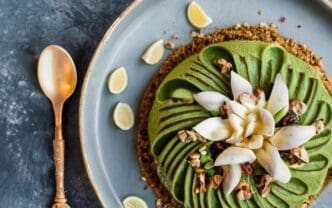A Quick Takeaway
- The “winter blues,” or sub-syndromal Seasonal Affective Disorder (SAD), is primarily caused by reduced natural sunlight exposure, which disrupts the body’s serotonin, melatonin, and Vitamin D levels, leading to low mood, fatigue, and other symptoms.
- Regular physical activity is a highly effective non-pharmacological intervention for combating the winter blues, as it releases mood-lifting endorphins, helps regulate circadian rhythms, and fosters social connection and self-esteem.
- A holistic approach combining consistent physical activity with other strategies like light therapy, balanced nutrition, good sleep hygiene, mindfulness, strong social connections, and professional support offers the most comprehensive defense against winter blues symptoms.
The Story Behind the Trend
- The “winter blues” and Seasonal Affective Disorder (SAD) are largely attributed to reduced exposure to natural sunlight during colder months, which disrupts the body’s neurochemical balance by causing an overproduction of melatonin and a decrease in serotonin, alongside often leading to vitamin D deficiency, thereby affecting mood, sleep, and energy regulation.
How to Make It Work for You
- The article emphasizes that regular physical activity is a crucial, non-pharmacological intervention for combating the winter blues and Seasonal Affective Disorder (SAD), directly improving mood, regulating circadian rhythms, and boosting self-esteem. This proactive approach, when integrated with other holistic strategies like light therapy, mindful nutrition, consistent sleep hygiene, and strong social connections, empowers individuals to effectively manage seasonal mood shifts and maintain overall well-being throughout the colder months, rather than passively enduring them.
The Community View
- The article highlights that the “winter blues” are largely a biological phenomenon, stemming from reduced sunlight exposure that disrupts the body’s serotonin and melatonin levels and leads to vitamin D deficiency.
- A primary viewpoint within the article is that regular physical activity is a highly effective, non-pharmacological intervention, working to release endorphins, regulate circadian rhythms, and improve social connection and self-esteem.
- The article also advocates for a holistic approach to thriving in winter, suggesting that while exercise is key, additional strategies such as light therapy, balanced nutrition, good sleep hygiene, strong social connections, and professional support are crucial complementary measures.
As the days shorten and temperatures drop, many individuals find themselves grappling with the “winter blues,” a common experience characterized by shifts in mood, decreased energy, and reduced motivation, often peaking from late fall through the colder months. This seasonal phenomenon, which can range from mild discomfort to more severe Seasonal Affective Disorder (SAD), is largely attributed to reduced exposure to natural sunlight, impacting the body’s serotonin and melatonin levels and disrupting its natural circadian rhythms. Fortunately, proactive strategies, particularly incorporating regular physical activity, offer a potent and evidence-based approach to not only mitigate these symptoms but also foster overall well-being and help you thrive throughout winter.
Understanding the Winter Blues
The winter blues, or sub-syndromal SAD, is a milder form of Seasonal Affective Disorder, a type of depression that recurs seasonally. Symptoms often include persistent low mood, feelings of fatigue, increased appetite (especially for carbohydrates), difficulty concentrating, and a tendency to withdraw from social activities. These changes are deeply rooted in our biology, as less sunlight disrupts the brain’s neurochemical balance, affecting mood, sleep, and energy regulation.
Reduced sunlight exposure can lead to an overproduction of melatonin, the sleep hormone, making you feel drowsier, and a decrease in serotonin, a neurotransmitter linked to feelings of well-being. Furthermore, vitamin D, primarily synthesized from sun exposure, plays a crucial role in mood regulation, and its deficiency is common during winter months, further contributing to the blues.
The Power of Movement: Why Activity is Key
Engaging in regular physical activity is one of the most effective non-pharmacological interventions for combating the winter blues. Its benefits extend far beyond physical fitness, offering profound positive impacts on mental and emotional health. Exercise acts as a natural mood elevator, stress reducer, and energy booster, directly counteracting many of the challenging symptoms of the colder season.
Endorphin Release
When you exercise, your body releases endorphins, natural opioids that produce feelings of euphoria and well-being, often referred to as a “runner’s high.” These powerful chemicals can significantly reduce perceptions of pain and discomfort, while simultaneously lifting your mood and alleviating feelings of sadness or anxiety. Regular movement provides a consistent, healthy way to tap into these natural mood boosters.
Circadian Rhythm Regulation
Physical activity, especially when performed outdoors in natural light, helps to regulate your body’s internal clock, or circadian rhythm. Consistent exposure to daylight, even on cloudy days, signals to your brain that it’s daytime, helping to suppress melatonin production and promote wakefulness. This synchronization can improve sleep quality at night and boost daytime energy levels, which are often disrupted during winter.
Social Connection and Self-Esteem
Participating in group fitness classes, team sports, or even walking with a friend can combat the social isolation often associated with the winter blues. These activities provide opportunities for connection and support, which are vital for mental health. Moreover, achieving fitness goals, no matter how small, fosters a sense of accomplishment and competence, significantly boosting self-esteem and overall confidence.
Expert Strategies for Staying Active
Integrating consistent physical activity into your winter routine requires intention and adaptability. The key is to find activities you genuinely enjoy and to make them accessible, regardless of the weather outside.
Embrace Outdoor Activity
Don’t let the cold deter you from the benefits of fresh air and natural light. Even a brisk 20-minute walk during your lunch break can make a difference, especially in the morning when light exposure is most beneficial for your circadian rhythm. Dress in layers, ensuring you’re warm and dry, and consider winter sports like skiing, snowboarding, ice skating, or snowshoeing, which combine physical exertion with the joy of nature.
Bring Activity Indoors
When outdoor conditions are truly prohibitive, there are countless ways to stay active indoors. Explore online fitness classes, from high-intensity interval training (HIIT) to yoga and Pilates, which can be done in the comfort of your home with minimal equipment. Joining a gym or community center offers access to diverse equipment, swimming pools, and group fitness classes, providing both physical challenge and social interaction. Consider active hobbies like dancing, rock climbing, or even simply taking the stairs instead of elevators.
Make it a Habit
Consistency is paramount. Schedule your workouts like any other important appointment, making them a non-negotiable part of your day. Finding an accountability partner, whether a friend or family member, can provide motivation and support when your energy wanes. Start with small, achievable goals and gradually increase intensity or duration. Varying your activities can also prevent boredom and challenge different muscle groups, keeping your routine fresh and engaging.
Holistic Approaches to Thrive
While physical activity is a cornerstone, a holistic approach combining several lifestyle strategies offers the most comprehensive defense against the winter blues.
Light Therapy
For those significantly affected by reduced sunlight, light therapy using a SAD lamp can be highly effective. These specialized lamps emit bright light that mimics natural outdoor light, helping to regulate serotonin and melatonin levels. Consult with a healthcare professional to determine if light therapy is appropriate for you and to ensure proper usage.
Nutrition and Supplementation
Maintain a balanced diet rich in whole foods, lean proteins, and complex carbohydrates to support stable blood sugar and energy levels. Limit processed foods, excessive sugar, and caffeine, which can exacerbate mood swings. Discuss vitamin D supplementation with your doctor, as many individuals are deficient during winter months, and it plays a vital role in mood and overall health.
Sleep Hygiene and Mindfulness
Prioritize consistent sleep by establishing a regular bedtime and wake-up schedule, even on weekends. Ensure your bedroom is dark, cool, and quiet to optimize sleep quality. Incorporate mindfulness practices like meditation, deep breathing exercises, or journaling to manage stress and cultivate a sense of calm and presence. These practices can help you navigate emotional fluctuations more effectively.
Social Connection and Professional Support
Actively resist the urge to isolate. Plan regular meet-ups with friends and family, engage in community activities, or volunteer. Maintaining strong social ties provides emotional support and a sense of belonging. If symptoms of the winter blues persist or worsen, impacting your daily life, do not hesitate to seek professional help from a doctor or therapist. They can offer personalized strategies, and in some cases, recommend medication or other therapies.
Embracing Winter Wellness
Navigating the winter months does not have to mean succumbing to low energy and mood. By understanding the underlying causes of the winter blues and proactively implementing a multi-faceted approach, you can significantly enhance your well-being. Make regular physical activity a non-negotiable part of your routine, whether indoors or out, and complement it with mindful nutrition, good sleep hygiene, strong social connections, and, when necessary, professional support. Embrace these strategies to not just endure winter, but to actively thrive and maintain your vitality until spring.








